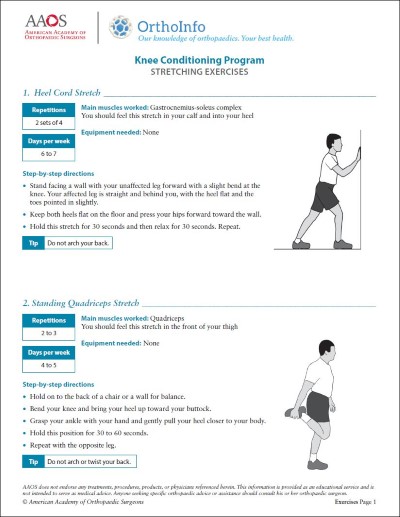Diseases & Conditions
Pes Anserine (Knee Tendon) Bursitis
Bursae are small, jelly-like sacs that are located throughout the body, including around the shoulder, elbow, hip, knee, and heel. They contain a small amount of fluid and are positioned between bones and soft tissues, acting as cushions to help reduce friction.
Pes anserine bursitis is an inflammation of the bursa located between the shinbone (tibia) and three tendons of the hamstring muscle at the inside of the knee. It occurs when the bursa becomes irritated and produces too much fluid, which causes it to swell and put pressure on the adjacent parts of the knee.
Pain and tenderness on the inside of your knee, approximately 2 to 3 inches below the joint, are common symptoms of pes anserine bursitis of the knee.
Cause
Bursitis usually develops as the result of overuse or constant friction and stress on the bursa. Pes anserine bursitis is common in athletes, particularly runners. People with osteoarthritis of the knee are also susceptible.
Several factors can contribute to the development of pes anserine bursitis, including:
- Incorrect training techniques, such as neglecting to stretch, doing excessive hill running, and sudden increases in mileage
- Tight hamstring muscles
- Obesity
- Being duck-footed or having knock knees
- Osteoarthritis in the knee
Symptoms
The symptoms of pes anserine bursitis include:
- Pain slowly developing on the inside of your knee and/or in the center of the shinbone, approximately 2 to 3 inches below the knee joint.
- Pain increasing with exercise or climbing stairs
- Puffiness or tenderness to the touch in this area
Doctor Examination
Your doctor will examine your knee and talk to you about your symptoms.
Symptoms of pes anserine bursitis may mimic those of a stress fracture, so an X-ray is usually required for diagnosis. Symptoms may also mimic those of a medial meniscus tear.
Treatment
Treatment of pes anserine bursitis is almost entirely non-operative.
Athletes with pes anserine bursitis should take steps to modify their workout program so that the inflammation does not recur.
Other treatments include:
- Rest. Discontinue the activity or substitute a different activity until the bursitis clears up.
- Ice. Apply ice at regular intervals three or four times a day for 20 minutes at a time.
- Anti-inflammatory medication. Non-steroidal anti-inflammatory medication (such as aspirin, ibuprofen, and naproxen) may ease the pain and reduce the inflammation. You can also use topical NSAIDs, like over-the-counter diclofenac gel.
- Injection. Your doctor may inject a solution of anesthetic and steroid into the bursa, which often provides prompt relief.
- Physical therapy. Your doctor may recommend physical therapy for specific stretching exercises, and ice and ultrasound treatments.
Last Reviewed
September 2021
Contributed and/or Updated by
Peer-Reviewed by
AAOS does not endorse any treatments, procedures, products, or physicians referenced herein. This information is provided as an educational service and is not intended to serve as medical advice. Anyone seeking specific orthopaedic advice or assistance should consult his or her orthopaedic surgeon, or locate one in your area through the AAOS Find an Orthopaedist program on this website.







